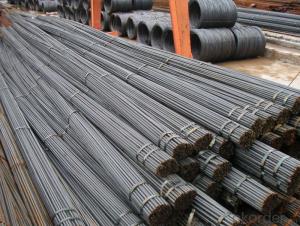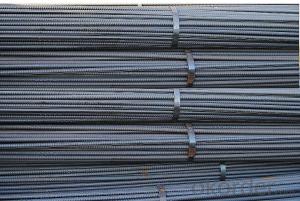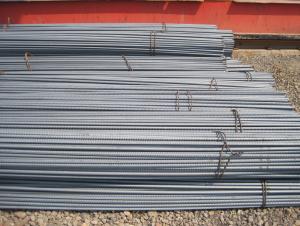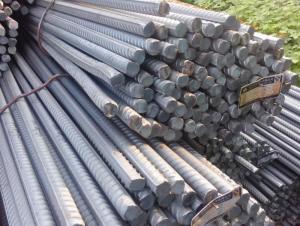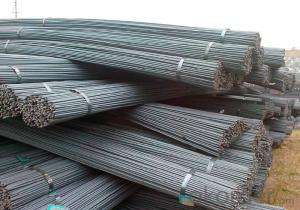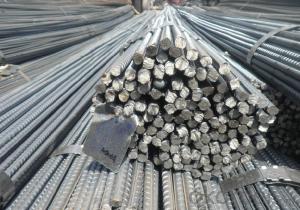HRB500 Deformed Steel Bar /Steel Rebars
- Loading Port:
- China main port
- Payment Terms:
- TT OR LC
- Min Order Qty:
- 100 m.t.
- Supply Capability:
- 100000 m.t./month
OKorder Service Pledge
OKorder Financial Service
You Might Also Like
Specification
HRB500 Deformed Steel Bar /Steel Rebars
Specifications
Standard: ASTM, GB, JIS, BS, AISI
Grade: HRB400, HRB335, HRB500, GR60
Length:6m, 9m,12m
Diameter: 8-40mm
Product Description
Type | steel rebar |
Standard Grade | a. GB1499.2-2007, HRB335, HRB400, etc. |
b. ASTM A615 Gr.40, Gr.60, etc. | |
c. BS4449, etc. d. JISG3112-SD390 | |
Diameter | 6mm-32mm etc. as per customers' requirement |
Length | 6m, 8m, 9m,12m as standard |
Application | Construction, shipping, building material |
Packing | standard export packing, or as per customers' requirement |
Quality | First quality |
Delivery time | Right now after the deposit. |
Others | 1. our products conform to all the standards |
2. we can offer special specification products as per our customers | |
3. we can offer the original mill test certificate and original product |
Physical Property-HRB500
Dia (mm) | Length(m) | Chemical composition (%) | Yield Strength(N/cm2) | Tensile Strength(N/cm2) | Elongation (%) | Benden 180° 3d | ||||
C | Mn | Si | S | P | MPa | |||||
Ø12 | 12 | 0.24 | 1.35 | 0.52 | 0.024 | 0.027 | 530 | 660 | 14 | OK |
Products
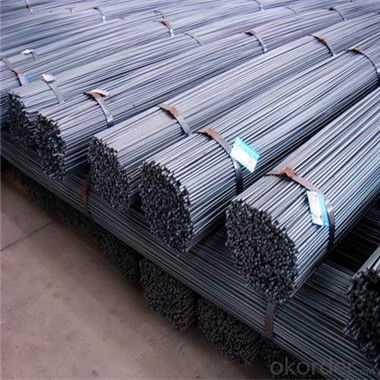
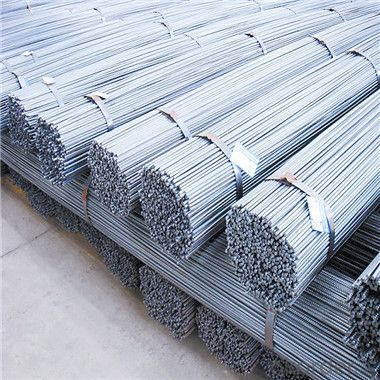
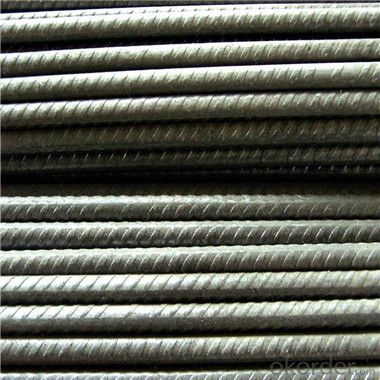
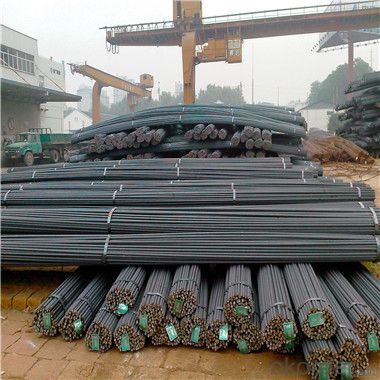
- Q: What are the common defects observed in steel rebars?
- Some common defects observed in steel rebars include surface imperfections such as cracks, pits, and corrosion, as well as improper dimensions or shape, inadequate strength, and poor welding.
- Q: Can steel rebars be used in reinforced masonry walls?
- Reinforced masonry walls often incorporate steel rebars to boost their strength and longevity. It is a common practice to employ steel rebars in the construction of these walls. The rebars are typically inserted into the mortar joints between the masonry units, such as bricks or concrete blocks. They serve to distribute any tensile forces that may arise in the masonry wall as a result of external loads or structural movements. Masonry materials are inherently strong in compression but weak in tension, so the addition of steel rebars helps fortify the structure. By incorporating steel rebars, the reinforced masonry walls become more resistant to lateral forces like wind or seismic loads, thereby reducing the likelihood of cracks or structural failures. Furthermore, the use of steel rebars enhances the overall stability and load-bearing capacity of the masonry wall, making it suitable for a wide array of construction projects.
- Q: How do steel rebars contribute to the overall ductility of a structure?
- The overall ductility of a structure is significantly improved by steel rebars in various ways. To begin with, steel rebars possess high flexibility and can endure substantial stress before yielding or breaking. This flexibility enables them to absorb and distribute the applied load, minimizing the risk of sudden failure or collapse. By reinforcing the concrete, rebars assist the structure in withstanding external forces like earthquakes or extreme weather conditions. Furthermore, rebars augment the tensile strength of the concrete. Although concrete is renowned for its impressive compressive strength, its tensile strength is relatively low. When stress is exerted on a structure, rebars aid in resisting tension forces and averting cracking or failure. This ensures that the structure can withstand both compressive and tensile forces, thereby bolstering its overall durability and safety. Moreover, steel rebars also bolster the structural integrity by impeding the propagation of cracks. When a crack initiates in a concrete element, the rebars act as a barrier, restraining the crack's expansion and preventing rapid dissemination. This characteristic of rebars helps to uphold the overall stability and integrity of the structure. Additionally, steel rebars offer a greater degree of flexibility during construction. They can be easily bent, shaped, and joined to meet specific design requirements, granting architects and engineers the ability to create structures that are more aesthetically pleasing and functional. This flexibility also facilitates the construction process by allowing modifications or adjustments to be made without compromising the overall strength or stability of the structure. In conclusion, steel rebars play an indispensable role in enhancing the ductility of a structure. They heighten the tensile strength, absorb and distribute stress, impede crack propagation, and provide flexibility during construction. These properties contribute to the overall durability, safety, and structural integrity of a building or infrastructure, establishing steel rebars as an essential component in contemporary construction practices.
- Q: Are there any limitations on the diameter of steel rebars?
- Yes, there are limitations on the diameter of steel rebars. The diameter of steel rebars is typically standardized and regulated by national and international building codes and standards. These codes and standards ensure that the rebars used in construction projects are of appropriate size and strength to meet safety requirements. The specific limitations on the diameter of steel rebars may vary depending on the intended use and the specific regulations in place. However, it is common to find rebars with diameters ranging from 6mm to 50mm in construction projects.
- Q: How are steel rebars measured and priced in the market?
- Steel rebars are typically measured and priced in the market based on their weight per linear foot or meter. The weight is usually expressed in pounds or kilograms. The pricing is influenced by factors such as the current cost of steel, market demand, and any additional processing or transportation costs.
- Q: How do steel rebars affect the overall sustainability certifications of a structure?
- Steel rebars can have a significant impact on the overall sustainability certifications of a structure. Firstly, the use of steel rebars in construction allows for increased structural strength and durability, which can enhance the lifespan of a building. This longevity reduces the need for frequent repairs or replacements, thereby reducing waste and resource consumption. Additionally, steel rebars can be recycled at the end of a structure's life, contributing to the circular economy and minimizing the environmental footprint. Moreover, steel rebars can help improve energy efficiency by enabling the use of thinner concrete sections, reducing the amount of material required and decreasing the embodied carbon footprint. Overall, incorporating steel rebars into construction practices can positively influence sustainability certifications by promoting resource efficiency, durability, and recyclability.
- Q: How are steel rebars manufactured and processed?
- Steel rebars, also known as reinforcement bars, are manufactured and processed through a series of steps. The process begins with the melting of raw materials, such as iron ore and scrap metal, in a furnace. Once the molten metal reaches the desired composition, it is poured into molds to form billets or ingots. These billets are then rolled into long, thin rods through a process called hot rolling. The rods are further processed by cooling, straightening, and cutting to the required length. Finally, the rebars are marked with identification codes and subjected to quality checks before being packaged and shipped to construction sites for reinforcement purposes.
- Q: How do steel rebars enhance the load-bearing capacity of a structure?
- Steel rebars serve to enhance the load-bearing capacity of a structure by reinforcing and strengthening the concrete. Essentially, they are embedded within the concrete, acting as a skeleton or framework that provides additional strength to the structure. The main purpose of steel rebars is to withstand tension forces that the concrete alone may not be able to withstand. When a structure is subjected to heavy loads or external forces, such as earthquakes or wind, the concrete may crack or fail under the stress. However, the steel rebars help distribute and absorb these forces, preventing the concrete from breaking apart. The ribbed surface of the rebars improves the bond between the steel and the concrete, ensuring effective transfer of loads between the two materials. This bond allows the rebars to resist tension and compression forces, as well as shear forces, resulting in an overall increase in load-bearing capacity. Moreover, steel rebars help control and limit the width and depth of cracks that may occur in the concrete. By restraining crack propagation, rebars prevent the cracks from expanding and compromising the structural integrity of the building. This is particularly crucial in earthquake-prone regions, where a structure's ability to withstand ground movements is of utmost importance. Additionally, steel rebars contribute to the durability and longevity of a structure. They possess high tensile strength, enabling them to withstand significant pulling forces without deforming or breaking. This property ensures that the structure remains stable and secure over time, even under dynamic or extreme loading conditions. In conclusion, steel rebars play a vital role in enhancing the load-bearing capacity of a structure by reinforcing the concrete, increasing its resistance to tension forces, and controlling crack propagation. Their presence significantly improves the structural integrity, durability, and safety of buildings, making them an indispensable component in modern construction practices.
- Q: What are the common challenges in handling steel rebars during construction?
- Construction often presents numerous obstacles when it comes to managing steel rebars. One primary hurdle involves the weight and size of the rebars themselves. These metal rods can be quite cumbersome and unwieldy, making it challenging to lift and manipulate them on the construction site. Failing to employ appropriate lifting techniques and equipment can result in worker injuries. Another issue concerns the storage and organization of rebars. Given the various lengths and sizes they come in, it becomes crucial to maintain a well-organized storage area that keeps them separate and easily accessible. Neglecting to do so can lead to construction delays and inefficiencies. Moreover, steel rebars are prone to rust and corrosion if mishandled or stored improperly. Exposing them to moisture, rain, or excessive humidity can cause deterioration, which weakens structures. Therefore, it is vital to safeguard rebars from these elements and store them in a dry, well-ventilated space. Additionally, placing and aligning rebars within concrete structures poses a challenge. This task demands skilled labor and precision to ensure that rebars are correctly positioned according to construction plans. Any errors in placement can compromise the building's structural integrity, leading to safety concerns and expensive repairs. Finally, transporting rebars to the construction site poses a logistical challenge. Coordinating their delivery and ensuring they arrive on time and in the required quantities can be complex, especially in large-scale projects. Delays in receiving rebars can result in project delays and additional costs. In conclusion, effectively managing steel rebars during construction necessitates careful planning, proper storage, skilled labor, and adherence to safety protocols. By addressing these common challenges, construction projects can ensure the successful and efficient utilization of steel rebars.
- Q: What are the standards and specifications for steel rebars?
- International organizations such as ASTM and ISO primarily establish the standards and specifications for steel rebars, also known as reinforcing bars. These standards guarantee that steel rebars meet specific requirements for strength, durability, and dimensional accuracy. ASTM A615 is one of the most commonly used standards for steel rebars. It covers deformed and plain carbon-steel bars for concrete reinforcement. This standard sets the minimum yield strength, tensile strength, and elongation properties for various rebars grades, including Grade 40, Grade 60, and Grade 75. It also outlines the mechanical properties, chemical composition, and bending properties of rebars. Aside from ASTM A615, there are other standards that provide specifications for steel rebars. ASTM A706, for instance, focuses on low-alloy steel bars for concrete reinforcement. This standard ensures that rebars possess improved weldability and ductility to withstand seismic forces and other dynamic loads. ISO 15630 is another significant standard that addresses steel for concrete reinforcement. It provides specifications for hot-rolled and cold-worked steel bars, as well as welded fabric and lattice girders. ISO 15630 outlines the mechanical properties, chemical composition, and dimensional tolerances of rebars. Furthermore, regional or national organizations also establish their own standards for steel rebars. For instance, the BSI has developed the BS 4449 standard, which specifies the requirements for carbon steel rebars used in concrete reinforcement in the United Kingdom. Similarly, the ISI has set the IS 1786 standard for cold-twisted steel bars used in concrete reinforcement in India. In conclusion, the standards and specifications for steel rebars ensure that these construction materials possess the necessary strength, ductility, and other properties required for reinforcing concrete structures. By adhering to these standards, manufacturers, engineers, and construction professionals can ensure the safety and durability of reinforced concrete projects.
Send your message to us
HRB500 Deformed Steel Bar /Steel Rebars
- Loading Port:
- China main port
- Payment Terms:
- TT OR LC
- Min Order Qty:
- 100 m.t.
- Supply Capability:
- 100000 m.t./month
OKorder Service Pledge
OKorder Financial Service
Similar products
Hot products
Hot Searches
Related keywords
